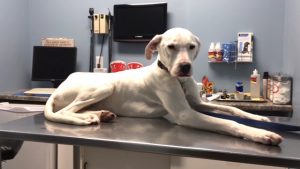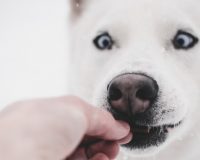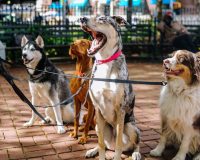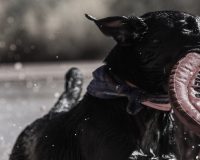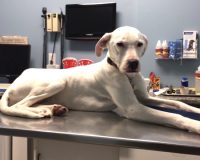Reading a dog’s body language is the most basic and necessary interpretive skill we can develop. Dogs show us everything we need to know about what they are thinking and feeling, so interpreting them in a timely fashion is a visual exercise. When we observe dogs attentively and understand their messages, early and in context, we read pups effectively and are better able to act upon what they tell us. But when we miss the cues, those messages can turn into sounds and actions that can be surprising, to say the least. Timing is everything; it allows us to pick up on early signals before pups have to speak louder, in behaviours.
Learn body language and context and you’ll discover a whole world of communication exists that we can tap into fairly easily. Learn it through books or through Certified Trainers and canine educators, and you’ll discover that there really are no surprises.
When cues inform attentive owners, the response is appropriate for both parties. This keeps pups in the happy zone and prevents bad things from happening.
When cues aren’t seen, it can be devastating and dangerous—this is especially true between dogs and children. Yet it is all preventable.
At worst, body language is complicated…to be learned. At best, interpreting what your pup is saying will deliver him his very best life. Yours too. The gains are absolutely immense.
This illustrated graphic, by Animal Foundations, shows canine body language in broad strokes. There is a lot of context, however. For instance, a growl directed at a person or dog can either mean back off or play with me. Behaviourally-complex dogs, such as abused or frightened rescue dogs, may go straight to behaviour and not show body language at all, depending on their experiences.
The way to look at behaviour is not from a position of good or bad—it’s communication—and a great many things can affect a pup’s behaviour. Body language and behaviour are instructive.
A dog’s history, environment, training, owner handling, in-the-moment circumstance, diet, health status—all affect behaviour. So when you see something, it will help to do a 360° rundown of why a pup might be behaving in a surprising way. Sudden and severe changes often reflect a change in physical or mental health status that is better investigated.
As a general rule…
When you see new and sudden behaviours that grow consistent each day—for instance, your one-year-old dog growls and snaps at you when you put food down or take it away (resource guarding)—then it’s time to get the Certified Trainer in.
When you see a new and sudden, severe or surprising behaviour(s) in your pup—for instance, dog resists doing what he has done every other day, with ease—it might be a good idea to take pup to the vet. It’s quite likely something is wrong.
Body Language is involved—and it changes as pups grow up. Puppies and adolescents have totally different behaviours. Breed genetics, in-utero scripting, and life experiences bring many more behavioural nuances.
At worst, body language is complicated…to be learned. At best, interpreting what your pup is saying will deliver him his very best life. Yours too. The gains are absolutely immense.
The best source for information on body language is On Talking Terms with Dogs—Calming Signals, by Turid Ragaas. It really is required reading, necessary so dogs and humans can communicate and live well together. This book will be life altering for you and your pup—for the better!
(Pictured above: Tess expressing her displeasure to be at the Vet’s office. Another dog might just sit very still, with no facial expression, and with a lifted paw. Learning the language tells us, among other things, when we need to soothe and reassure our pups.)


